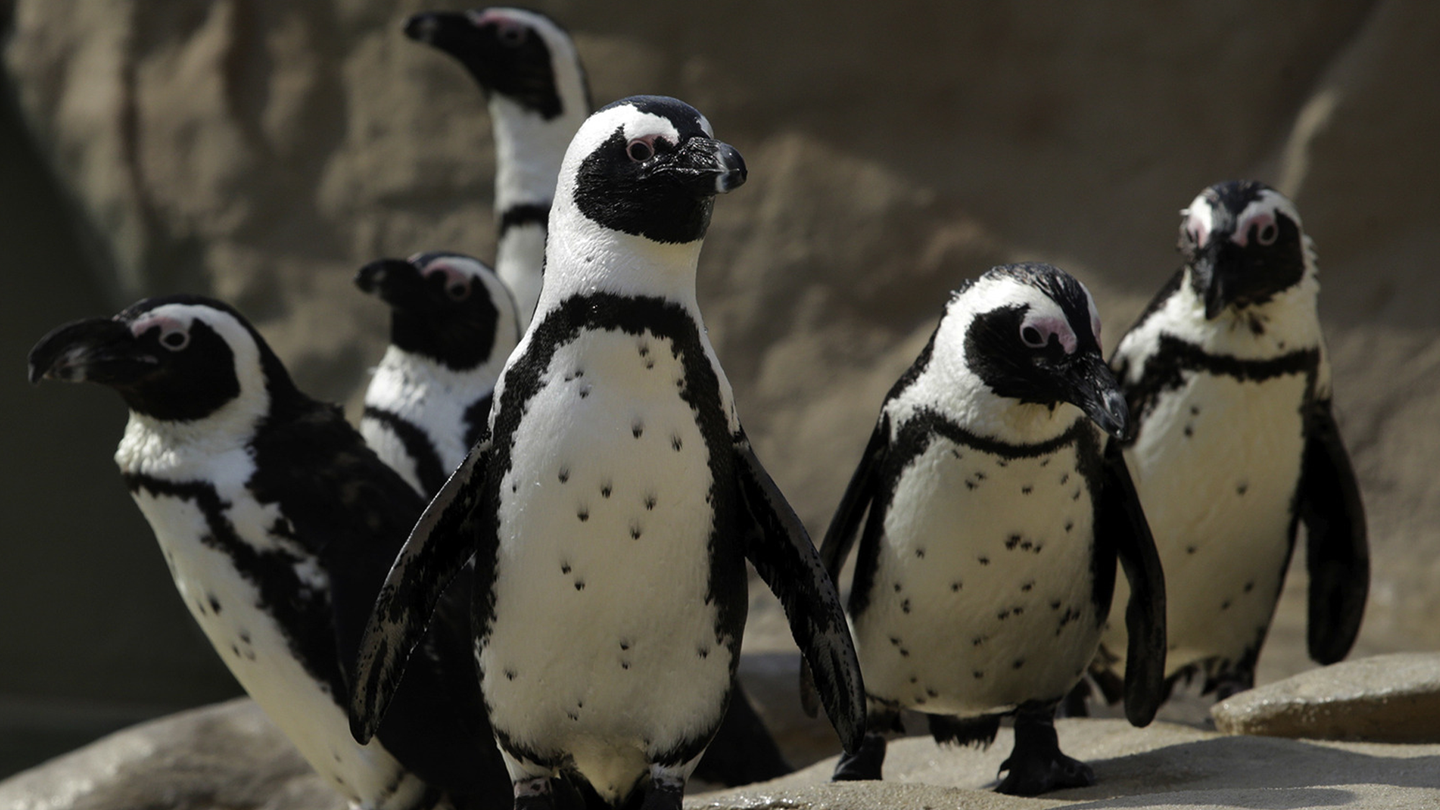African penguins may tell each other apart by the spots in their plumage
The dots reemerge in the exact same position when their annual plumage comes in.

The assortment of black dots that decorate African penguins’ mostly all-white fronts might help the birds tell each other apart. This is the first documented time that animal behaviorists and psychologists have pinpointed a physical feature that a bird species uses for visual recognition. The findings are described in a study published in the January 2024 issue of the journal Animal Behaviour.
[Related: How African penguins continue to survive changes in climate.]
In birds, distinguishing individual flock members is primarily based on auditory cues and not visual cues. For example, some parrots distinguish their offspring with squawking equivalent of individual names. This new research is one of the first studies to show that birds could use visual cues more than scientists previously believed.
According to study co-author and animal psychologist Luigi Baciadonna, the dots on African penguins appear when they are about three to five months old. These birds molt annually and reemerge in the same position when the new plumage comes in.
In the new study, a team from Italy’s University of Turin, the University of Oulu in Finland, and Zoomarine Italia marine park near Rome conducted a simple experiment with 12 penguins. The team built a small enclosure with plywood walls that was just tall enough to prevent a penguin from seeing over it. They placed cameras on either end of the pen and life-size pictures of two penguins on one of the far walls. One penguin entered the enclosure, where one of the pictures featured its specific mate.
African penguins form lifelong bonds with their partners and the team tracked their responses to images of other penguins from their species. They found that the penguins spent more time looking at the picture of their partner than they did a picture of a different familiar penguin. This occurred even when the heads of the penguins were blurred.
When the test penguins were shown two images of their partner, including one that had the spots removed, they preferred the images where the dots remained intact. However, this preference for their partner did not occur when the birds saw unspeckled versions of their mate and a different bird. According to the team, this suggests that the penguins use these spots to tell one another apart.
[Related: Jackass penguins talk like people.]
African penguins live along the coasts of Namibia and South Africa. They are about 24 to 27 inches tall and eat squid, anchovies, and other small fish. African penguins are known to be particularly communicative with one another, so scientists have studied their behavior to better understand some of the more advanced social behaviors seen in primates. A 2021 study found that African penguins are capable of vocal accommodation. Different group members have a different dialect and vocal accommodation allows group members to learn to speak more like the others.
“Given how goofy penguins can seem–almost stumbling over their feet as they walk, for example–the birds may not seem like they are all that bright,” Baciadonna told New Scientist. “But we showed in these two or three experiments that actually they are quite complicated and complex. They’re also clever.”
Animal physiologist and director of the Institute of Neurobiology at the University of Tübingen Andreas Nieder told Science, “It is an original study with a remarkable finding.” Nieder was not involved in the new research.
